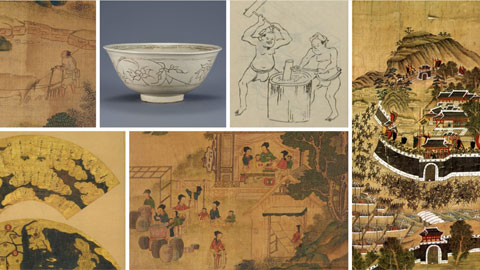First Database on the Imjin War Launched

ICREA researcher at the UAB Rebekah Clements has coordinated the launch of the first online database of the Imjin War, the largest war fought in the 16th century. This resource aims to be of great value to researchers specialising in the history of East Asia.
The largest war in the world during the 16th century took place in Asia in 1592, when Japan invaded the Korean peninsula and China sent troops to help its loyal vassal state. The war lasted six years and involved more than 500,000 combatants. The conflict continues to have a cultural impact throughout East Asia today, but there is relatively little Western scholarship written about this event. There is however a great amount of material in Korean, Japanese and Chinese, as well as some primary sources in European languages, which altogether help to understand the aftermath of the war from a regional perspective.
Rebekah Clements, ICREA researcher at the Department of Translation and Interpreting and East Asian Studies at the UAB, has been in charge of coordinating the launch of the first large bibliographic database on the Imjin War, with documents compiled in different languages from both Asian and European secondary sources. The project, entitled AFTERMATH, has received funding from the European Research Council, and contains information on over 400 journal articles, books, book chapters, and dissertations written in nine languages: Chinese, Korean, Japanese, English, German, French, Italian and Portuguese, all in an online bibliographic database which aims to help in understanding the aftermath of this East Asian war.
"Our objective is to help scholars search for documents in different languages and enable future collaborations among scholars of Chinese, Korean, Japanese and Western backgrounds", Rebekah Clements states. "Our goal is not so much the study of the conflict itself, but of the consequences and impacts it has had on the modern history of East Asia".
The database covers a wide range of aspects of the Imjin War, such as information on prisoners, pottery produced during that period, Christianity, international relations, economics, the environment, Europe, identities, literature, military history, migrations, social history and trade. It allows analysing the human aspect of war, given that tens of thousands of Koreans were captured and sold to Japan as slaves, and many Japanese soldiers fell into the hands of the Chinese army and never returned to their country of origin. The project examines the trajectory of these people and how they were integrated into their new societies.
The war also caused widespread economic and environmental devastation in Korea, with large extensions of crop fields destroyed. The database offers information for the analysis of the consequences on farming, on the health of people and livestock, and the effects this had on the later fall of China's Ming dynasty. Lastly, the database favours the analysis of other collateral aspects of the war, since the conflict helped to disseminate East Asian technology and skills among the countries battling against each other, in terms of weapons used, processes such as printing, pottery and metallurgy, and even references to the study of Confucianism.
The project Aftermath of the East Asian War of 1592-1598 has received funding from the European Research Council (ERC) under the European Union's Horizon 2020 research and innovation programme (grant agreement No 758347).






